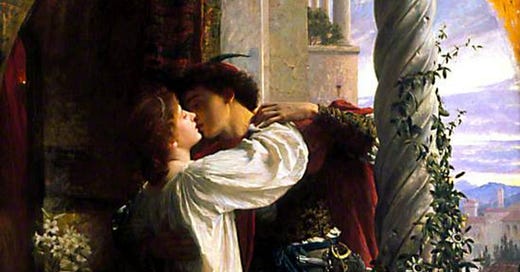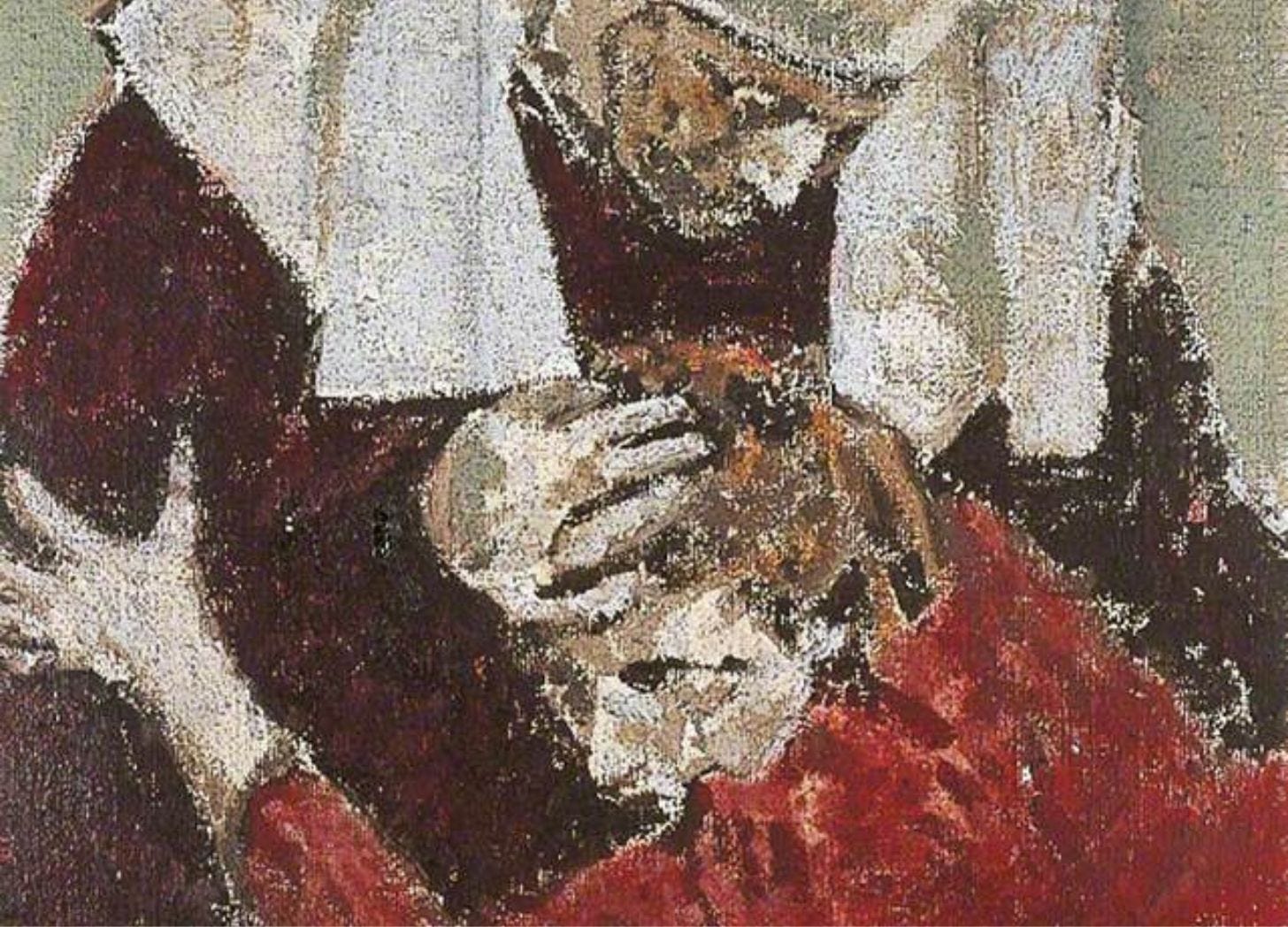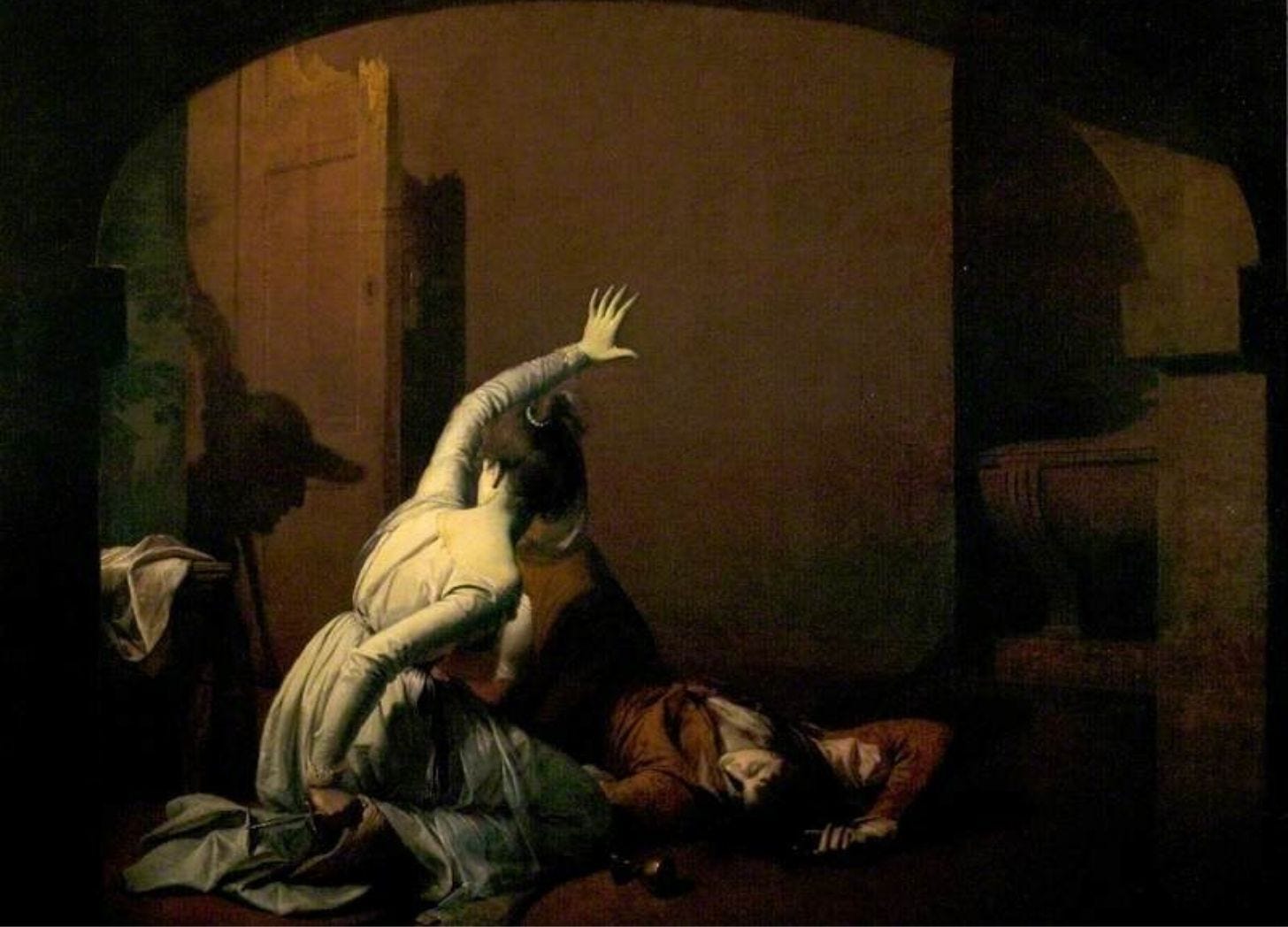Harness the Story Energies: A Star-Crossed Case Study
Boy meets girl, huh? What if their families hate each other...
If you’re new here, read this quick primer on the Story Energies, a new way to talk about storytelling.
In case we haven’t yet met: My name’s Colin, and I’m a writer and writing teacher from County Kildare in Ireland. I developed the Story Energies as a way to talk with my students about how to make stories feel vibrant and alive without relying on the overused, prescriptive commandments often handed down in workshops, and this week I’m launching this Substack to share this approach with anyone who might like to give it a try.
While these Energies are not rooted in actual science—they’re more of a convoluted metaphor!—they’ve been really popular with my students, and even I’ve been surprised by how helpful they have proved to be for illuminating and improving all sorts of stories, right throughout the story-generating process.
Whether it’s breathing oxygen onto the glowing tinder of a new idea, bringing a cauldron of story to a boil, or assembling and reanimating exhumed story parts, I’ll be talking a lot more about how to incorporate the Story Energies into your creative process in the coming weeks. But for now, here’s a quick example, for illustrative purposes, of how to harness the Energies when you’re just getting started.
So.
You have a new idea.
You’re pretty sure it’s never been done before.
You’re pretty excited.
“What if… a guy… meets… a girl!?”
What a start! Already, you have two characters: a guy and a girl. And a plot: guy meets girl. But how, you might wonder, can you grow some juicy flesh on those bones?
The Story Energies can help! Let’s take them one by one…
First, you’ll probably want to put some obstacles in the way of their love—let’s say their parents are against it, because their families have this long-running feud and really hate each other? So now both these young pups are going to have to go behind their clans’ backs to get to properly meet and get to know each other. Maybe they can wear masks? Maybe he can wait til dark and then hop the wall into her garden?
You probably want to set your story somewhere romantic. How about Italy? All those piazzas and palazzos! And you don’t want to lean too far into national stereotypes, but if these two (and most of their friends and relatives) could be of the hot-blooded variety of Italians, quick to fall cap-over-slippers in love, to brawl in the streets, and to seek swift and violent retribution for perceived slights against their honour… well, that’s not gonna hurt. The story.
Let’s make them both charming as hell, and gorgeous! The dreamiest, smartest, most eligible prospects in the whole town. And this story is only going to be as strong as the bond between these two. They shouldn’t just meet, they should cataclysm. At first goddamn glance. And maybe we can quickly intensify their instant attraction into the deepest, most all-consuming infatuation the world has ever seen?
Can we have them move around? How about a party? With dancing? Can we get her up high, somehow, so he has to climb up to her? Can there be sword fights?
Love is in the air! I’m already all tingly. The dancing should help charge this atmosphere, and the violence too! And for emotion—that electricity of the heart and nerves—how ecstatic the lovers will be when they finally get to triumphantly collapse into each other’s arms!? Or… how harrowingly distraught, if their love is suddenly interrupted?
Along the way, we’re going to want to generate some serious tension to keep things riveting. Maybe someone could get seriously hurt—or even die, why not!?—in one of those brawls, to tauten the strain, elevate those stakes, double that jeopardy? Maybe our guy’s the one to get reckless? Maybe they will have to resort to increasingly desperate measures to try to be together? Maybe this final plan they hatch could be really dangerous. Maybe things can go wrong?
Try to capture that longing in the dialogue, make it zing.
And can you write it in verse?
This isn’t something we add as the tellers, but if we can bring enough of those other forms of Energy, the story itself should take on a life of its own and generate some real heat. And then, who knows, you’ll end up with something sublime, a literally awesome story, that people will be telling each other for centuries at least.
Now. All we need is a title. What did you say their names were again?
Some ideas we come up with might struggle to ignite, because we haven’t charged the set-up with enough Potential, or because we haven’t imagined the world of the story with enough density of detail to exert Gravity upon its characters. Maybe we haven’t given our characters enough reasons to move through their world, doing things and making things happen (Kinetic)? Maybe our characters could be more charismatic, or enigmatic, or maybe they don’t care about each other (Magnetic)? Maybe the atmosphere’s flat, or our characters aren’t cutting loose with their emotions (Electrical)? Maybe there’s not enough conflict to raise any tension (Elastic)? Maybe our sentences are unnecessarily slack or baggy (Nuclear)?
By methodically working our way through each form of energy, and thinking consciously about how we can bring some more of it to our developing idea, we can discover new ways to make our stories more compelling—for the reader, eventually, but for now, just for us.
To discover and explore everything this new approach has to offer, sign up for 60 days of free, full access to all Story Energies content as we get up and running.
I found all the star-crossed art here, amongst other interpretations. Kudos to Frank Bernard Dicksee, Walter Richard Sickert Mather Brown, and Joseph Wright of Derby for their work.



















